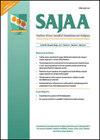卡亚取暖器:在资源有限的环境中为血液取暖
IF 0.3
Q4 ANESTHESIOLOGY
引用次数: 0
摘要
预热至 46°C 的 1 000 毫升水浴中。我们使用 4 探头电子温度计测量了以下温度:环境温度、PRBC 袋温度、水浴温度和流出温度。结果平均流出温度为 35.2°C(95% CI 35.1-35.4);平均排空时间为 9.0 分钟(95% CI 8.7-10.2),平均流速为 25.4 毫升/分钟-1(95% CI 24.1-26.6)。结论事实证明,卡亚加温器能以经济有效的方法安全地将冷的 PRBC 单位加温至平均温度 35.2°C。未来的研究包括使用压力袋或流量调节装置研究各种流速,以及用保温烧瓶取代预热水浴。本文章由计算机程序翻译,如有差异,请以英文原文为准。
Khaya-warmer: blood warming in a resource-constrained setting
in a 1 000 ml water bath preheated to 46°C. Using a 4-probe electronic thermometer, we measured the following temperatures: ambient, PRBC bag, water bath and outflow. Results: Mean outflow temperature was 35.2°C (95% CI 35.1–35.4); mean emptying time 9.0 minutes (95% CI 8.7–10.2) with a mean flow rate of 25.4 ml.min -1 (95% CI 24.1–26.6). Conclusion: The Khaya-warmer proved to be effective in safely warming cold PRBC units to a mean temperature of 35.2°C using a cost-effective method. Future studies include investigating various flow rates using a pressure bag or a flow regulating device, and to replace the preheated water bath with a thermally insulated flask.
求助全文
通过发布文献求助,成功后即可免费获取论文全文。
去求助
来源期刊

Southern African Journal of Anaesthesia and Analgesia
ANESTHESIOLOGY-
CiteScore
0.90
自引率
0.00%
发文量
10
 求助内容:
求助内容: 应助结果提醒方式:
应助结果提醒方式:


